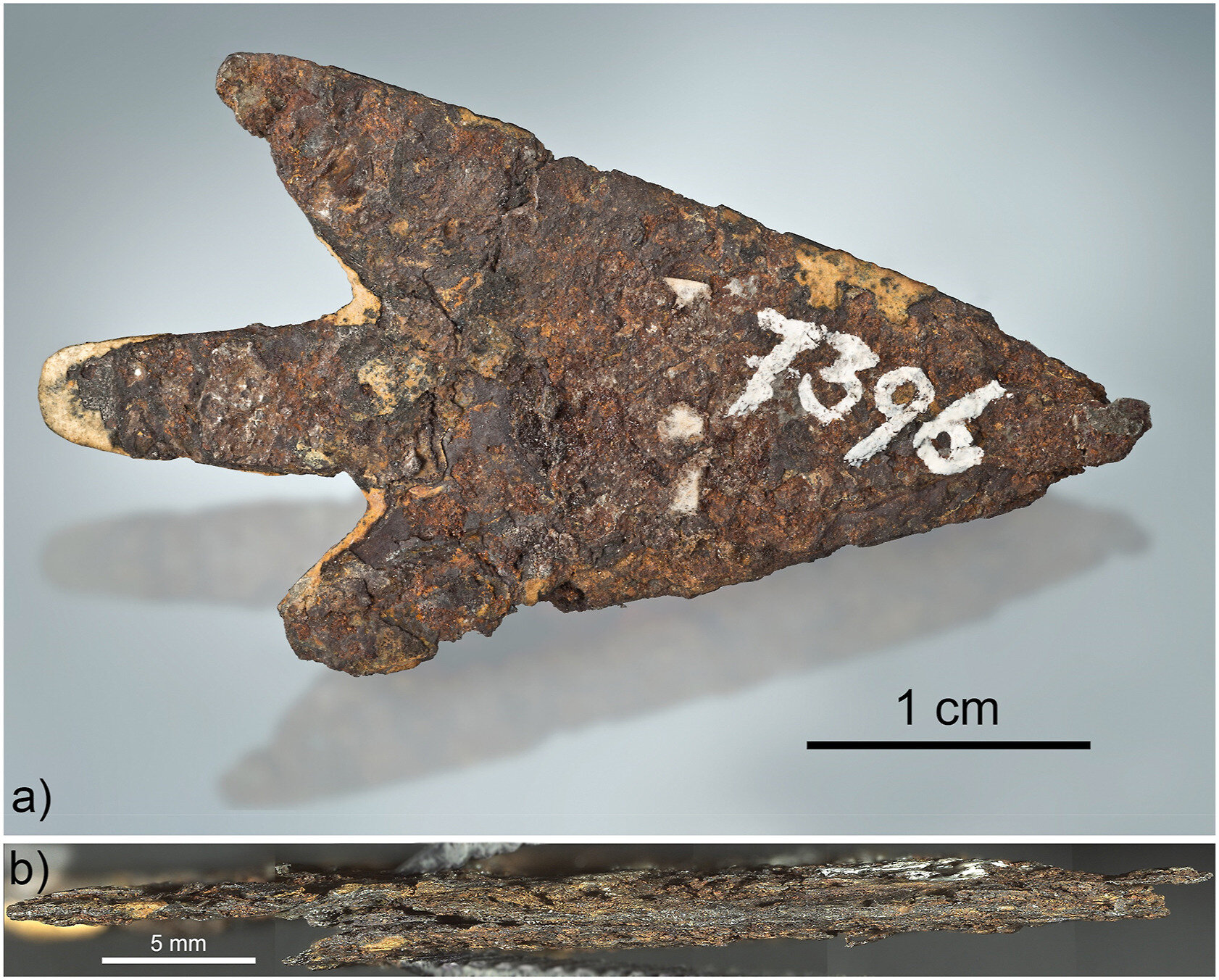Arrowhead housed at Bern History Museum found to be made from meteoritic iron - Phys org
An international team of geologists and historians has found that an arrowhead housed at the Bern History Museum was made using meteoritic iron. In their paper published in Journal of Archaeological Science, the group describes the attributes of the arrowhead and where they believe the material it was made of came from.
Prior research has shown that meteoritic iron was used by early people in many parts of the world, from Eurasia to the Middle East and Africa. Notably, researchers have found few examples of use of meteoric iron by early people in Europe. Suspecting that many such artifacts have been found but not identified as such, the team on this new effort conducted a search of archaeological collections at various sites in Switzerland.
Testing of an arrowhead found at the Bern History Museum showed it was made partly of aluminum-26 isotopes, which are not found naturally on Earth. They also found an iron and nickel alloy that has only ever been detected in meteorites.
In checking its history, the team found that the arrowhead had been discovered at what had once been a Bronze Age site called Mörigen...
The team also found remnants of an adhesive on the arrowhead, which they guessed to be tar pitch, suggesting that the arrowhead had been attached to a shaft of some sort.
The researchers noted that the site where the arrowhead was found is less than eight kilometers from the point where the Twannberg meteorite crashed into the ground, making it the likely source of the iron used to make the arrowhead. But upon closer inspection, the team found that the concentrations of germanium and nickel did not match. That led them to look for another source.
A search of a geological database showed that only three meteorites with the right combination of metals had been found in Europe: one in the Czech Republic, another in Spain, and the third in Estonia. The research team suggests that the one in Estonia was the most likely source for the arrowhead they studied—an example of the extensive trade network that was active during the Bronze Age in Central Europe.

